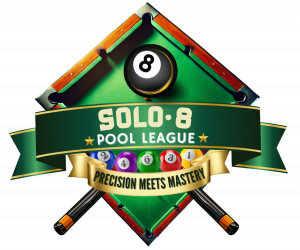
SOLO 8 POOL LEAGUE
LEARNING CENTER
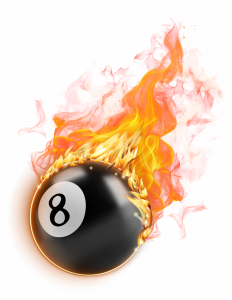
Basic Aiming Terminology

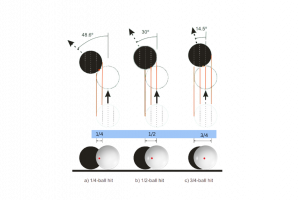
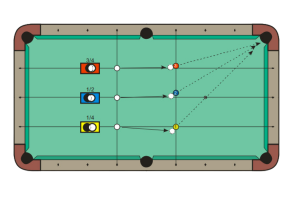
Approaches to aiming vary from person to person. Commonly cited examples include:
Standard ball-hit fraction shots
• Visualize the GB and align to send the CB to that position.
• Visualize the angle of the shot and the aim line necessary to create that angle.
• Visualize the amount of ball overlap necessary for the amount of cut you need.
• Visualize the required contact point on the OB and aim the CB to create contact at this point.
A more formal approach to aiming is to use an “aiming system” that prescribes a clear and unambiguous
set of steps to help you arrive at the necessary line of aim. One example is the ghost-ball-based cue-pivot
method, where you place the tip at the center of the GB position with the cue aligned in the OB target
direction, and then pivot the butt of the cue about the tip until the cue is aligned with the center of the CB (see
NV 3.2 and my October ‘08 article). Diagram 4 illustrates two other well known systems. The first (Diagram
4a) is the parallel-lines CP-to-CP system, which works as follows:
1. Visualize a line through the center of the OB in the target direction. This locates the CP on the
OB.
2. Shift this line to the CB, keeping it parallel to the line in step one (see the blue lines). This defines
the CP on the CB.
3. Visualize a line through the CB CP and the OB CP (see the red line).
4. Parallel shift this line to the center of the CB. The result is the required aiming direction
(neglecting CIT, of course).
Diagram 2. illustrates three common reference shots often cited in discussions about aiming. The dotted
lines on the CB and OB represent quarter divisions of the balls. Ball-hit fraction is one approach used to
describe the amount of cut needed on a particular shot. This number represents the percentage of balloverlap. With a ¼-ball hit, the CB overlaps ¼ (25%) of the OB, creating a 48.6˚ cut angle. A ½-ball hit overlaps ½ (50%), resulting in 30˚. And a ¾-ball hit overlaps ¾ (75%), resulting in a 14.5˚ cut. FYI, cut
angles for all ball-hit fractions can be found in
Basic aiming terminology
Diagram 3. illustrates ball layouts
creating each of the three cuts in Diagram 2. The 1-ball is centered on the bottom diamond line, the bottom
edge of the 2-ball is about half a ball above the middle diamond line (the long string), and the bottom edge of
the 3-ball is right on the top diamond line. As indicated, with the CB positioned as shown, the three balls can
be pocketed with ¼-, ½-, and ¾-ball hits. But remember, the actual OB direction will vary slightly with speed,
spin, and conditions because of throw effects.
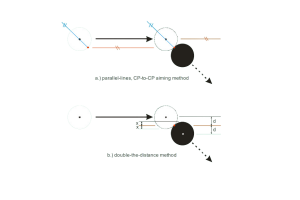
Some aiming systems are based on aligning and sighting to/from the different CB and/or OB ¼-ball
reference points illustrated in Diagram 2. Examples include Hal Houle’s 3-angle system, CTE, and SAM. If
you want to learn more about these and other cut-shot aiming systems, see the
Basic aiming systems
“aiming” FAQ page on my
website. Any system based on a limited number of lines of aim will obviously not cover a wide range of shots
without adjustment (for more info and illustrations, see “limited lines of aim” on my website’s “aiming” FAQ
page). However, these systems are still of value to some people. If nothing else, these systems can foster a
consistent pre-shot routine, focus attention on body and visual alignment, and promote concentration
